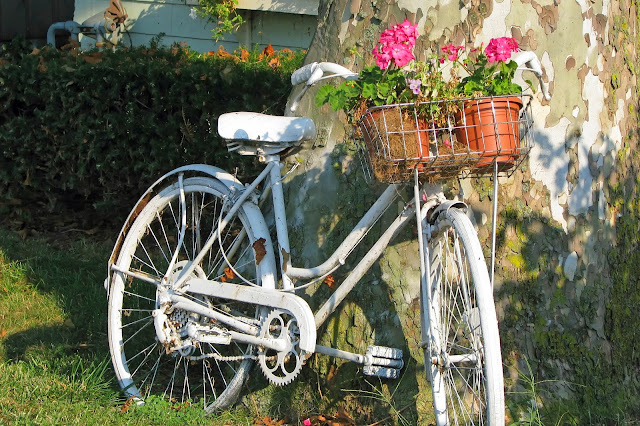The Wright Brothers are not the only iconic sons of Ohio’s Miami Valley. I remember seeing his face on a postage stamp in 1975, but never really knew all the details of his interesting and inspirational life. I only recently discovered his home is part of the Dayton Aviation Heritage National Historic Park, which meant I could learn more about the famous poet AND score another stamp in my National Parks Passport. Sign me up for the tour!
Paul Laurence Dunbar was born in 1872 in Dayton to former slaves. His parents instilled in him a love of learning, and he began reading and writing poetry as early as age 6. He was nicknamed “Deacon” for the solemn manner in which he recited.
Paul was the only African-American at Dayton’s Central High School, which he attended with classmate Orville Wright. Though he often had difficulty finding employment because of his race, he actively participated in school as a member of the debating society, editor of the school newspaper, and president of the school’s literary society. He also published a newspaper for the African-American community, the Dayton Tattler, which the Wrights printed for him. After graduation, however, Paul faced the realities of racism.
Paul worked as an elevator operator in the Callahan Building and wrote on the job between calls. His break came when he was asked to address the Western Association of Writers when the organization met in Dayton. A poet in the audience was impressed by Paul and penned a newspaper article about him. It was read by James Whitcomb Riley, the “Hoosier Poet.” Both he and Paul wrote in Standard English and dialect. With encouragement from Riley, Paul’s first book of poems, Oak and Ivy, was published in 1892. He continued to work as an elevator operator to help pay his debt to the publisher and until he could establish himself nationally as a writer. He sold his book for a dollar to elevator passengers. As more people came in contact with his work, his reputation spread.
His second book, Majors and Minors (1895) garnered him the support of literary critic William Dean Howells. Howells ultimately wrote the introduction for Lyrics of Lowly Life, a publication which combined Paul’s first two books. Paul’s essays and poems were soon widely published in the leading journals of the day.
After Paul returned from a literary tour in London, he married writer Alice Moore in 1898 and took a job at the Library of Congress. In 1900, he was diagnosed with tuberculosis and moved to Colorado with his wife on the advice of his doctor. Paul and Alice separated in 1902 but never divorced. He returned to Dayton to be with his mother and, in 1903, purchased a home for her. They resided there together until he succumbed to his illness in 1906; Matilda maintained the residence until she passed in 1934. The house at 219 North Summit Street (now Paul Laurence Dunbar Street) would become the first public memorial to honor an African American.
In 1936 the Ohio Legislature dedicated the house to commemorate Paul Laurence Dunbar and delegated its care to the Ohio Historical Society. Two years later, it was opened to the public. In 1962 it was declared a national historic landmark and became part of the Dayton Aviation Heritage National Historic Park in 1992. A major renovation in 2003 restored the house to the way it appeared when Paul lived there with his mother.
The Italianate turn-of-the-century structure exhibits Paul’s literary treasures, personal items and family furnishings. Among items on display are his bicycle built by the Wright brothers, the desk and chair where the poet composed much of his work, his collection of Native American art, and a ceremonial sword presented to him by President Theodore Roosevelt.
Paul authored four collected volumes of short stories, five novels, three published plays, lyrics for 13 songs, 14 books of poetry, 400 published poems, and uncounted essays on social and racial topics over a 13-year period. Although he only lived to be 33 years old, he became the first African-American writer to gain national recognition and international acclaim.
As a wannabe writer, I was moved by the story of Paul Laurence Dunbar and inspired by his works. The following especially spoke to me. Literary history. Good stuff!
KEEP A-PLUGGIN’ AWAY
I’ve a humble little motto
That is homely, though it’s true,—
Keep a-pluggin away.
It’s a thing when I’ve an object
That I always try to do,—
Keep a-pluggin away.
When you’ve rising storms to quell,
When opposing waters swell,
It will never fail to tell,—
Keep a-pluggin away.
If the hills are high before
And the paths are hard to climb,
Keep a-pluggin away.
And remember that successes
Come to him who bides his time,—
Keep a-pluggin away.
From the greatest to the least,
None are from the rule released.
Be thou toiler, poet, priest,
Keep a-pluggin away.
Delve away beneath the surface,
There is treasure farther down,—
Keep a-pluggin away.
Let the rain come down in torrents,
Let the threat’ning heavens frown,
Keep a-pluggin away.
When the clouds have rolled away,
There will come a brighter day
All your labor to repay,—
Keep a-pluggin away.
There’ll be lots of sneers to swallow,
There’ll be lots of pain to bear,—
Keep a-pluggin away.
If you’ve got your eye on heaven,
Some bright day you’ll wake up there,—
Keep a-pluggin away.
Perseverance still is king;
Time its sure reward will bring;
Work and wait unwearying,—
Keep a-pluggin away.










































_filtered.jpg)















